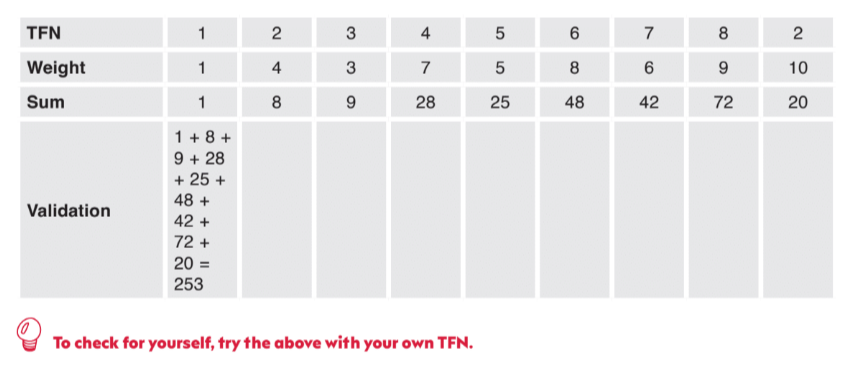The secret life of TFNs
Tax file numbers (TFNs) are so much an everyday element when dealing with tax and the ATO that many taxpayers won’t give it a second thought when tax return software responds with an “invalid” message when a TFN is entered.
The common thought will be that it’s human error, so naturally one’s first reaction will be to check the numbers you entered, followed by carefully re-entering them.
Most of the time the problem will be fixed and it’s business as usual, but here’s a passing thought— how does the tax return software know what is, and what is not, a valid TFN? Especially when you consider that its validity or otherwise is not dependant on matching those numbers with someone’s name and/or birthday and/or address and so on. These identifiers are used to cross-check a person’s identity of course, but the initial validity of a TFN is known via another factor — the “TFN algorithm”.
This verification algorithm, also known as a check digit algorithm, is embedded in each unique TFN. As with a lot of these things, this is best explained using an example. However, you need to keep a number in mind, which in this case is the number 11.
To make the algorithm work, a fixed weighting is applied to each number of the TFN. In order from the left, these weightings are 1, 4, 3, 7, 5, 8, 6, 9, 10.
Example: 123 456 782 See table below: as 253 is a multiple of 11, the TFN is valid.


